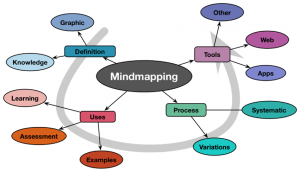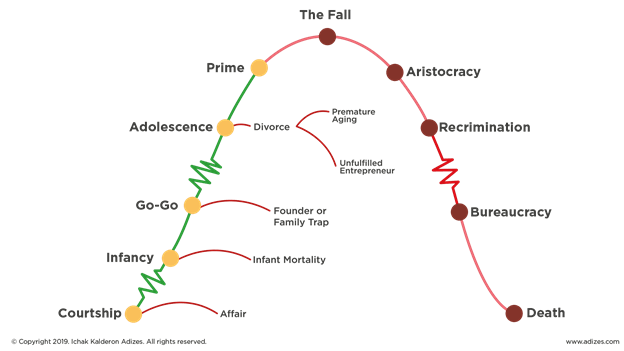When a business stops changing, it starts dying. Change is inevitable in the world, in business, and in us. And change is imperative! When we stop moving our bodies, we decline. When we stop changing as people, or as a company, we are on our way to decline.
But change in and of itself is no guarantee of growth because most projects fail. This is due to many commonly understood factors like prioritization challenges, poor requirements, changing project objectives, poor communication, change management challenges and more.
Interestingly, many of these could be traced back to the perspectives and responses of those involved in change. And this is driven by an individual’s response to the unknown of what change represents, which often takes the form of resistance. This resistance results in reduced information sharing, lack of collaboration, and diminished overall buy-in.
What is a leader to do? This post will help leaders understand their change cycle, how to find their organization’s sweet spot for change, why employees react negatively to change, and how to move them from fear to excitement to realize more positive results from change efforts.
Understanding the Adizes Corporate Lifecycle
The change cycle and the importance of constant (strategic) change is very aptly explained with Adizes Corporate Lifecycle. This theory identifies an ideal location on the lifecycle of every business, big or small, called Prime. To simplify the overall stages in the lifecycle, we’ll group them into three sections:
- Start Up: This is like a seven-year itch – if you can get past Adolescence, you should be fine
- Stages
- Courtship
- Infancy
- GoGo
- Adolescence
- Prime
- One spot – THE spot
- Maintain the youthful ability to change
- Instill critical thinking and strategic focus to ensure effective, sustainable change
- Decline: At each stage, red tape increases – as does comfort. Resistance to any change becomes the norm.
- Stages
- The Fall
- Aristocracy
- Recrimination
- Bureaucracy
Finding Your Organization’s Sweet Spot
Early in a company’s lifecycle, change is a significant thing, an everyday presence, often chaotic in nature. When there is little to go on, that is normal and, in some ways, healthy and appropriate. At some point, when success is experienced, it is important to take advantage of the cushion (small though it may be) and begin to change more strategically.
Change is imperative, but as there becomes more to lose, it is important to balance the change with the risk represented. That sweet spot is called Prime. In Prime, a business is constantly changing, but with strategic thought and control. Once change stops, the journey into bureaucracy starts, which ultimately leads to decline and, ultimately, the death of the organization (unless the organization can regain its youthful view of change).
With such a clear graph showing how change in the organization is healthy and necessary, shouldn’t it be easy to accept, appreciate, and instill? Not quite. Change is a journey into the unknown, and it’s unpredictable. That is scary for most. Yet, we wonder why people resist change. It often seems the only people not scared of change are those enabling it.
How Physiology Impacts Your Employees’ Response to Change
Although many would like to think of themselves as logical and reasonable individuals who make rational choices, the primary driver behind most responses is an emotional one. To understand that, it’s important to consider the physiology of the brain and how that translates into psychological response from your employees.
The brain has three major areas:
- Midbrain: The initial receptor of information
- Hindbrain: Fight or flight
- Forebrain: Logic
When someone learns their world is going to change, the immediate response is seldom one of excitmement. It is usually some degree of discomfort. Depending on the individual, the hindbrain’s determination of fight or flight response could win with varying degrees of intensity. It’s not simple to move people from fight or flight to logic. We must get them excited first.
Moving Employees from Fear to Excitement
That sounds complicated to most, and not very fun. How do I overcome the fear enough to get people excited? That just doesn’t make sense. While yesterday is more comfortable because it’s known, it is a dangerous place to remain in today’s world. Peter Drucker said it quite well, “The greatest danger in times of turbulence is not the turbulence—it is to act with yesterday’s logic.”
A theory that helps define the psychological response to change can be found in the Kubler – Ross Change Curve: Kübler-Ross Change Curve® – EKR Foundation. It walks you through the emotional response to change and helps the change enabler see things from the emotional perspective of the stakeholder in the middle of it. This perspective can be a game changer in giving insight to that change enabler so they can engage in the most successful way possible to overcome the fear, move to excitement and ultimately (hopefully) have not just involved, but committed stakeholders.

Techniques to Help Your Team Overcome Fear of Change
While some environments may resist the idea of making change fun and distracting people from fear, using interesting engagement techniques can help a team get past that crocodile brain hump. Introduce a fun, creative, collaborative game. Make it a friendly competition and include little unique prizes to get engagement going.
Ideally, techniques that help overcome fear have the following in common:
- Physical Movement: Getting up out of the chair enables better flow of logic and creativity.
- Color: Using color engages the brain differently than black and white.
- Interaction: You may be smart, but any single brain isn’t as big as all the brains together in the room – and relationships are key. Just like there’s safety in numbers, handling change is easier as a group so they don’t feel like they have to navigate the waters of change alone.
Just a few of the techniques that incorporate those attributes:

- Mind Mapping
- Qualities
- Easy to learn
- Easy to use
- Highly collaborative
- Brainstorming: no wrong answers; everyone has a voice
- When to use
- Early in change
- Helps you find where to focus
- Uncovers things that may have been missed otherwise
- Qualities

- Speed Boat
- Qualities
- Helpful imagery
- Interesting to use
- Highly collaborative
- When to use
- Once a direction is found
- Qualities

- Flip It – My Favorite for flipping from fear to excitement to logic
- Qualities
- Easy to learn
- Easy to use
- Perspective changing
- When to use
- Topic is known, but details are not
- Helpful when focused on the shift from negative to positive thinking
- Qualities
Ideally, this activity is done by a leader or someone who is seen as objective. Therefore, the person doing this must not be in the area that is requiring change (to avoid the risk of group think). Often a Business Analyst or similar role is the most appropriate resource. They are the leaders without authority and are often the confidant of the stakeholders. This provides a safe space where the stakeholders can explore the emotional journey that is change.
Successful Change Management Focuses on the Journey and the Destination
Change is scary and hard, so having committed stakeholders is critical. If your organization can find someone who can lead these efforts effectively, then you will not only come through the change, but you will do so with grace and success. By focusing on the journey, your organization can reach change more effectively, more efficiently, and more prepared for the next change on the horizon. If you want to see higher ROI from change efforts, then contact us.
Reference: Making Change Fun (masteringbusinessanalysis.com)








Share on